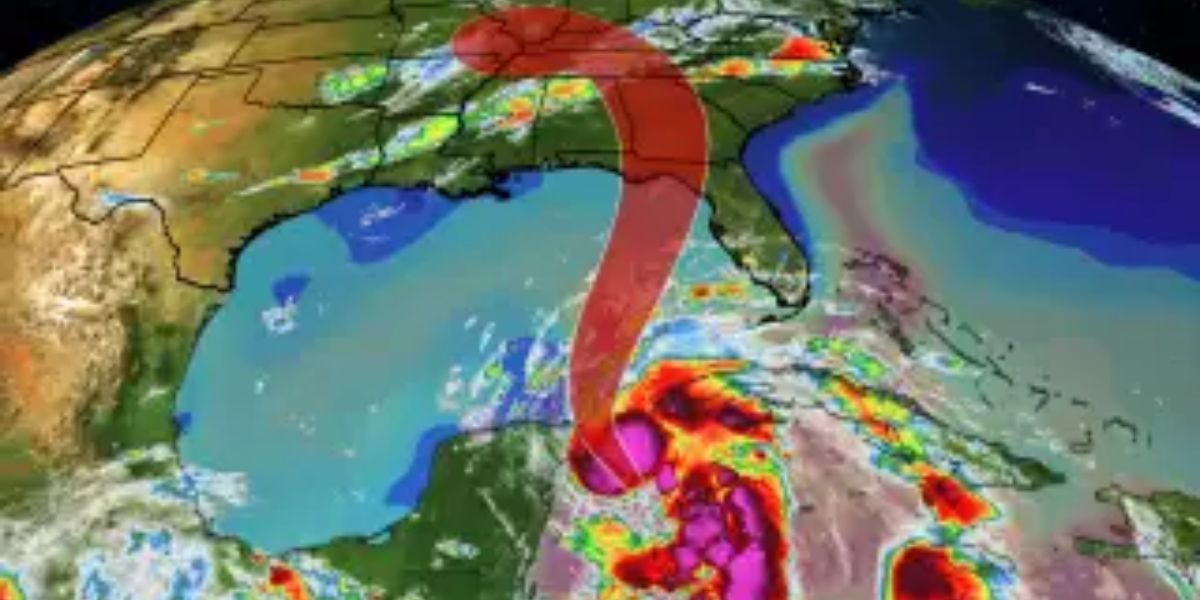MJP –
On Wednesday, Tropical Storm Helene was forecast to intensify in the Caribbean Sea and make landfall in the United States, where it would cause school closures, evacuations, and emergency declarations in Florida and Georgia. The storm was tracking north along the coast of Mexico into the United States.
U.S. National Hurricane Center predictions indicate that the storm will be “near hurricane strength” as it moves near Mexico’s Yucatan Peninsula early Wednesday, and will “intensify and grow in size” as it advances north across the Gulf of Mexico.
The National Hurricane Center warned of “life-threatening storm surge” over Florida’s entire west coast and heavy rains across the southeastern United States beginning on Wednesday.
The hurricane center predicts that Helene will strengthen into a Category 3 or greater storm on Thursday, the day it is predicted to make landfall on the Gulf Coast of Florida in Florida. Hurricane watches and warnings have been issued for portions of the Yucatán Peninsula in Mexico and the northwest coast of Florida by the National Hurricane Center due to the anticipated high storm surges of up to fifteen feet (4.5 meters).

Former Hurricane John continued to smash Mexico’s other coast, leaving the country in a state of disarray. Hurricane John made landfall on the southern Pacific coast of the nation at the end of Monday, causing mudslides, tearing tin roofs off buildings, and the death of two individuals, according to officials who spoke Tuesday.
Severe Weather Alert: Flash Flood Warning and Power Outages in Southeast Louisiana
On Monday, John quickly intensified into a Category 3 hurricane. It made landfall approximately 80 miles (128 kilometers) east of the Acapulco resort, close to Punta Maldonado, with maximum sustained winds of 120 mph (193 kph). However, as it moved inland, John weakened to a tropical storm.
Helene is anticipated to intensify as it moves over deep, warm waters. The storm originated in the Caribbean on Tuesday. Authorities have issued storm watches and warnings, so residents in certain areas should stock up on food and water for three days in case the electricity goes out.
Parts of western Cuba and Florida, including the Tampa Bay area, were also under hurricane watches, a lower level of warning, according to the National Hurricane Center.
“It’s going to be a very massive system with implications across all of Florida,” said Larry Kelly, a specialist at the hurricane center.
Orders to evacuate have been issued by multiple counties along the western and western shores of Florida. Starting Wednesday, several school districts have announced plans to either close schools or cut hours. These districts include those in and around Tampa as well as Tallahassee, the state capital.
In preparation for the impending floods, some coastal residents began packing sandbags and others started to evacuate.
Federal Emergency Management Agency troops were sent to Florida and Alabama to assist local first responders after President Joe Biden proclaimed a state of emergency in Florida. According to the White House, federal authorities were preparing food, water, and generators, as well as personnel to search for survivors and restore power.
While Georgia’s governor, Brian Kemp, similarly declared an emergency in his state, Florida’s Ron DeSantis did the same for the majority of the state’s counties.
Storm surges, wind, and rain are expected to stretch far beyond the storm’s core due to the storm’s expected extremely enormous size and rapid movement, according to the hurricane center. Precipitation may fall on states as distant as Indiana, Kentucky, and Tennessee in the interior.
The Cayman Islands were already battered by large seas and heavy rain on Tuesday. Grand Cayman was hit hard by powerful winds that cut power to certain places, while heavy rain and waves up to 10 feet (3 meters) caused flooding, prompting officials to close schools, airports, and government offices. Later on Tuesday, officials warned that personnel will spread out to evaluate damage, but that citizens should remain indoors as the storm weakened.
Havana, Cuba’s capital, is already dealing with a severe water deficit, mountains of uncollected trash, and persistent power outages; many are anxious that the storm would add to their problems.
The Atlantic hurricane season began on June 1 and Helene is the seventh named storm so far. Philip Klotzbach, a hurricane researcher from Colorado State University, reports that eight significant hurricanes have made landfall in Florida since the year 2000.
As a result of historically high ocean temperatures, the NOAA has forecasted an Atlantic hurricane season that is above average for this year. Before the season closes on November 30th, it predicts 17–25 named storms, including 4–7 significant hurricanes rated at Category 3 or above.
The report was authored by Associated Press journalists Marcia Dunn in Cape Canaveral, Florida; Danica Coto in San Juan, Puerto Rico; Andrea Rodríguez in Havana; Mark Stevenson and María Verza in Mexico City; and Claire Rush in Portland, Oregon.




